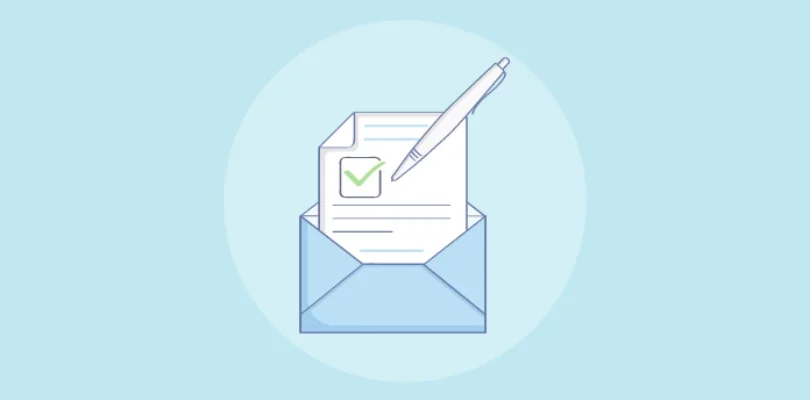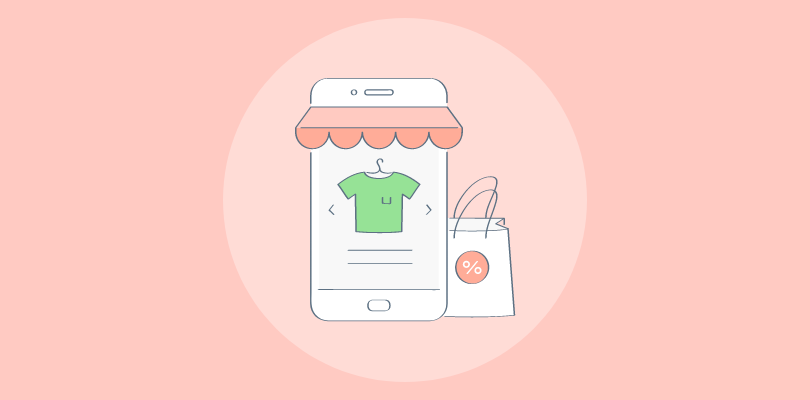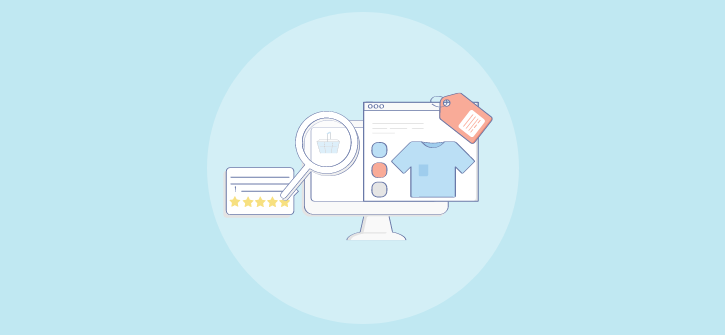You’ve spent weeks driving traffic to your website through ads, SEO, and social media, and finally, people are landing on your pages.
But before they click, read, or explore… they leave.
Frustrating, right? I’ve been there too. A high bounce rate feels like pouring water into a leaky bucket with lost leads, sales, and wasted marketing dollars.
Here’s the good news: a high bounce rate isn’t a dead end; it’s a signal. Over the last eight years, I’ve worked with 200+ founders and marketers, and I’ve learned this: when you understand why people leave, you can design experiences that make them stay, explore, and convert.
In this guide, I’ll share eight proven strategies to:
- Reduce bounce rate without gimmicks
- Improve user experience across devices
- Turn fleeting visits into meaningful conversions
Excited to dive in? Let’s get started!
8 Effective Ways to Reduce Website Bounce Rate
Now that we understand why users leave, let’s look at how to reduce bounce rate on a website with proven tactics you can apply right away. Here are 8 effective ways to reduce your website’s bounce rate and keep visitors engaged.
1. Speed up Page Load Time
If you’re wondering how to reduce bounce rate on a website, start by speeding up your website. Let’s be honest, nothing frustrates people more than a slow website. If your page takes longer than 3 seconds to load, the chance of someone bouncing shoots up by 32%.
While visitors might not always know whether the design, content, or speed is the problem, slow load times are usually the first red flag. Here’s how to fix it:
- Audit Your Site Performance
Start by testing your site with Google PageSpeed Insights. It shows performance on desktop and mobile and whether you pass Core Web Vitals: loading speed (LCP), responsiveness (INP), and visual stability (CLS).

- Optimize Load Time
If load time is over 3 seconds:
- Follow Google’s recommendations—optimize images, simplify code, or improve server response.
- Combine CSS and JS files where possible and remove unused scripts to reduce the number of requests your site makes when loading.
- Compress large images with TinyPNG or Kraken.io without losing quality.
- Set up a Content Delivery Network (e.g., Amazon CloudFront) so visitors load your site from the nearest server, making it faster no matter where they are.

Fast-loading websites don’t just help SEO, they keep visitors engaged, reduce frustration, and give you a better shot at turning traffic into leads or sales.
2. Keep Your Brand Compatible With Mobile
Mobile now drives nearly 64% of website traffic in the US, but it’s also where bounce rates are highest. Visitors often leave if pages look cramped, buttons are too small, or popups block the screen.
Inconsistent branding across devices makes things worse—if your logo, fonts, or colors shift from mobile to desktop, trust and engagement drop fast. Optimizing mobile usability is among the most effective tips to reduce bounce rate, especially with today’s mobile-first visitors.
Here’s how to fix it:
1. Test Your Mobile Experience
Run your site through Google’s Mobile-Friendly Test or check the mobile report in PageSpeed Insights. Aim for a score of 90+ and page load under 3 seconds. Compare mobile vs desktop bounce rates in Google Analytics to see where visitors are dropping off.
2. Improve Mobile Usability
Adopt a responsive design that adapts to all screen sizes. Use at least 16px font, large tap-friendly buttons, and simple menus. Avoid cluttered layouts that make it hard for users to find what they need. Something like this:

3. Use Popups Carefully
On mobile, keep popups non-intrusive by using exit-intent triggers. Ensure forms are GDPR-compliant, easy to close, and offer bilingual support if you serve diverse audiences.
4. Keep Branding Consistent
Check that your colors, fonts, and logos render the same across desktop, mobile, and apps. Consistency builds recognition and trust, which helps visitors feel confident enough to stay and convert.
A mobile-friendly, consistent brand presence not only improves user experience but also reduces frustration, builds trust, and lowers bounce rates across devices.
3. Create an Attractive Landing Page Design
A landing page is often your first impression, and if it feels cluttered, confusing, or irrelevant, visitors leave within seconds.
Here’s how to fix it:
A. Match Intent From the Start
Make sure your landing page headline mirrors the ad or email that brought visitors there. For example, if your ad says “Get 20% off your first order,” repeat that message on the page so users don’t feel misled. Google Ads reports can help you find pages that don’t match visitor expectations.
B. Simplify Layout and Navigation
Use a clean design with a single focus. Stick to one primary CTA (“Sign Up,” “Download,” “Book a Demo”) and avoid distracting links. Tools like Unbounce offer templates built for conversions.

C. Add Trust and Credibility
Customers often bounce if they don’t see proof that your brand is reliable. To avoid that, build trust by placing 2–3 short testimonials or star ratings directly below the CTA.
For instance, keto supplement brand KissMyKeto places star ratings under its “Add to Cart” button to reassure buyers before checkout.

You must also add SSL or “data protected” badges near your signup form. You can usually get these from your SSL certificate provider, like GoDaddy, or use built-in “secure checkout” badges if you’re on platforms like Shopify or WordPress plugins.
4. Offer a Variety of Engaging Content
Ever land on a site and feel bored because everything looks the same? That’s how visitors feel when all they see is long blocks of text. Mixing formats keeps users engaged longer and lowers bounce rates.
Use visuals, videos, and smart formatting to make content easier to digest. Break articles into short paragraphs, add bullet points, and highlight key ideas with subheadings. Tools like Canva make it simple to create infographics, while embedding short explainer videos can boost time on page.

Videos and visuals work well for skimmers, while detailed guides and blogs engage deep readers.
In engagement reports under Google Analytics, check which formats your visitors spend the most time on, then prioritize those.
Don’t stop at static content. You can embed interactive personality quizzes using tools like ProProfs Quiz Maker, which generate a copy-paste code you drop into your page. It helps create quizzes using AI prompts or ready-to-use templates easily and for free.

If you serve global audiences, create bilingual versions by enabling a translation plugin (like Weglot or WPML on WordPress) or using Shopify’s built-in language settings. This way, visitors can switch languages instantly instead of leaving when they can’t read the page.
5. Provide Personalization & Advanced Recommendations
Visitors stay longer when they feel the site understands them. Personalization reduces bounce by showing the right offer at the right time, whether a tailored product suggestion, a dynamic popup, or a relevant email follow-up.
Start by building user profiles with data you already have: browsing history, clicks, or form fills. Most CRMs, like BIG Contacts, allow you to tag users automatically based on behavior. From there, segment audiences into groups (first-time visitor, repeat shopper, cart abandoner) so you can deliver content that speaks directly to them.
Use on-site personalization to keep visitors engaged. Instead of showing the same offer to everyone, trigger special offer popups using Picreel that adapt to behavior (e.g., show a discount if someone viewed a product twice but didn’t purchase, or surface related articles if they’re scrolling through a blog). Here’s one example:

Add “Recommended for You” or “Recently Viewed” sections using plugins like Recombee or Shopify’s built-in recommendation apps, so users always have a next step to click instead of leaving.

Finally, measure results. Track not only bounce rate but also conversion lift from personalized elements (signups, purchases). A/B test generic vs. personalized CTAs to see how much of a difference personalization is making.
6. Promote Interactive User Experience
A static website is easy to ignore, but an interactive one gives visitors a reason to stay. Interactive elements like chatbots, quizzes, and gamified popups are among the most effective tricks to reduce bounce rate because they give users a reason to stay.
- AI Chatbots: Use ProProfs Chat to engage visitors instantly, answer FAQs, and guide them to the right page, keeping them from dropping off. The chatbot can be trained with your own data, customized easily, and even integrated with your help desk or knowledge base for 24/7 support.

- Questionnaire: Instead of static feedback forms, create attractive questionnaires with ProProfs Survey Maker that visitors can respond to in one click. This keeps users engaged while collecting valuable insights in real time. You can integrate one or multiple questions.

- Quizzes: Add fun, personalized quizzes using ProProfs Quiz Maker, like “Which plan is right for you?” or “Find your perfect product.” They boost interaction, capture leads, and encourage visitors to stay longer on your site. Here’s one such quiz Casper uses to recommend suitable mattresses to their prospects:

- Smarter Popups: Use gamified designs like spin-to-win discounts. Keep them non-intrusive by targeting strategically, GDPR-compliant by including consent checkboxes, and bilingual by integrating the site with Google Analytics if you serve diverse audiences. You can build them using Picreel popup templates.
For instance, fashion brand Elaina Gisele Collection uses a spin-the-wheel popup offering tiered discounts, turning opt-ins into a fun, FOMO-driven game that keeps shoppers engaged.

- Progress Bars and Challenges: Use visual cues to show users how close they are to a goal. Add a step bar (e.g., “2 of 3 steps complete”) to cut drop-offs in forms or checkouts. On blogs, show a reading progress bar so visitors see how much is left.
In e-commerce, use trackers like “You’re $10 away from free shipping” to nudge bigger carts. Most platforms like Shopify, WooCommerce, WordPress offer plugins, or you can add simple scripts for reading bars.
7. Optimize for Traffic Relevance
A high bounce rate isn’t always your site’s fault—sometimes the wrong visitors are landing there. If your ads, search keywords, or social posts promise one thing and your page delivers another, people leave immediately. Optimizing for traffic relevance means aligning what you promote with what visitors actually expect.
- Match Ad and Page Messaging: If your ad says “Free Trial, No Credit Card,” your landing page should highlight that exact offer in the headline. Misleading copy is one of the top reasons users bounce.
- Target Intent-Driven Keywords: Focus on long-tail, high-intent keywords (e.g., “buy running shoes online” instead of just “running shoes”). Use tools like Semrush to identify them.

- Check Relevance in Analytics: In Google Analytics, look for traffic acquisition to compare bounce rates by source. If traffic from one campaign or keyword is bouncing at 80%+, it’s likely misaligned. Next, pause or refine those campaigns and keywords, then align your ad copy and landing page content so they match visitor intent.
- Filter out Unqualified Visitors: Filter out unqualified visitors by using negative keywords (e.g., exclude “free” if you sell paid software) or narrowing social ads to only target your buyer persona (e.g., show “B2B CRM” ads only to business owners, not students).
8. Continuously Act on User Insights
Reducing bounce isn’t a one-time fix. It requires acting on user behavior data and testing improvements continuously. A/B testing helps you identify which version of a page keeps visitors engaged and drives conversions.
- Start With User Insights: Use heatmaps in Hotjar to see where users stop scrolling or ignore CTAs.

In engagement reports of Google Analytics, you can filter by pages with the highest bounce rate and prioritize those for testing.
- Run Focused A/B Tests: Create two page versions and test one element at a time. For example, duplicate your landing page, change only the CTA (“Get Started Free” vs. “Start My Free Trial”), and split traffic between the two versions to see which gets more clicks. Use Nelio A/B Testing on WordPress to set up experiments from your dashboard and track results instantly. For larger tests, Google Optimize lets you run experiments, target audiences, and measure outcomes with Analytics integration.

- Go Beyond Vanity Metrics: Instead of just looking at bounce, connect Google Analytics or your CRM to track actual conversions like form submissions, downloads, or purchases. This shows whether a winning variation really impacts business results.
- Act On Results Quickly: Once you find a winning variation, publish it across your site using your CMS or page builder. Keep a testing schedule (for example, one new experiment every two weeks) so small improvements build into noticeable bounce rate reductions.
Reduce Bounce Rate & Improve UX + Conversions
Reducing bounce rate isn’t about chasing one silver bullet. It’s about making small, consistent improvements that together create a smoother, more engaging experience. By applying these strategies, you’ll no longer be guessing how to reduce bounce rate—you’ll have a clear, data-backed roadmap to keep visitors engaged and converting.
Start with the basics: make sure your site loads in under 3 seconds and feels seamless on mobile. Then, go deeper by designing landing pages that match visitor intent, adding trust signals near your CTAs, and keeping your content diverse so there’s something for every type of reader.
Personalization, interactive tools like chatbots, polls, or gamified popups, and relevance-driven traffic strategies all help keep visitors around longer. Finally, don’t just “set and forget.” Use heatmaps, analytics, and A/B testing to understand what’s really working and double down on those wins.
The takeaway? A lower bounce rate isn’t just about numbers—it’s about showing visitors they’ve landed in the right place, giving them reasons to stay, and guiding them toward meaningful actions that grow your business.
Frequently Asked Questions
Do exit-intent popups really help reduce bounce rate?
Yes, when used strategically. Exit-intent popups can capture leads before visitors leave, but they must be non-intrusive, GDPR-compliant, and personalized. For example, offering a discount, bilingual support, or a free resource on exit often turns bouncers into subscribers or buyers.
How do I make sure my popups don’t annoy visitors and cause even more bounces?
Keep popups targeted and timed well—avoid blocking content immediately. Use behavior triggers (exit-intent, scroll depth, inactivity), segment audiences, and ensure easy close options. A/B testing popup designs and messages is one of the best tips to reduce bounce rate without harming UX.
 Tips
Tips
We’d love to hear your tips & suggestions on this article!
FREE. All Features. FOREVER!
Try our Forever FREE account with all premium features!

 We'd love your feedback!
We'd love your feedback! Thanks for your feedback!
Thanks for your feedback!







